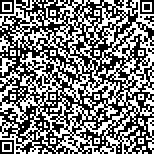袁文蓉,陈立娜,刘洋洋,等.呼吸肌抗阻训练联合反馈式呼吸电刺激对脑卒中患者膈肌功能及肺功能的影响[J].中华物理医学与康复杂志,2023,45(2):114-118
扫码阅读全文

|
| 呼吸肌抗阻训练联合反馈式呼吸电刺激对脑卒中患者膈肌功能及肺功能的影响 |
|
| |
| DOI:10.3760/cma.j.issn.0254-1424.2023.02.004 |
| 中文关键词: 脑卒中 电刺激 膈肌厚度 膈肌移动度 肺功能 |
| 英文关键词: Stroke Electrical stimulation Diaphragm thickness Diaphragm movement Pulmonary function |
| 基金项目: |
|
| 摘要点击次数: 4471 |
| 全文下载次数: 4886 |
| 中文摘要: |
| 目的 观察呼吸肌抗阻训练联合反馈式呼吸电刺激疗法对脑卒中偏瘫患者双侧膈肌功能及肺功能的影响。 方法 采用随机数字表法将60例脑卒中偏瘫患者分为观察组及对照组,每组30例。2组患者均给予常规康复干预及呼吸肌抗阻训练,观察组在此基础上辅以反馈式呼吸电刺激治疗,每日治疗2次,每周治疗6 d,持续治疗3周。于治疗前、治疗3周后采用超声检测2组患者偏瘫侧及健侧吸气末膈肌厚度(IDT)、呼气末膈肌厚度(EDT)、平静呼吸及深呼吸时膈肌移动度,并计算膈肌增厚分数(DTF),采用便携式肺功能仪检测2组患者肺功能,同时分析比较治疗前、后2组患者偏瘫侧及健侧膈肌功能障碍发生率。 结果 治疗后观察组患者偏瘫侧、健侧膈肌功能障碍发生率均较治疗前及同期对照组明显降低(P<0.05)。治疗后观察组患者偏瘫侧及健侧IDT、EDT、DTF、平静呼吸及深呼吸时膈肌移动度均较治疗前明显改善(P<0.05),而对照组偏瘫侧及健侧上述疗效指标均较治疗前无明显改善(P>0.05);并且治疗后观察组患者偏瘫侧及健侧IDT、DTF、深呼吸时膈肌移动度亦显著优于对照组水平(P<0.05)。治疗后2组患者各项肺功能指标均较治疗前明显改善(P<0.05),并且观察组肺功能指标改善幅度亦显著优于对照组水平(P<0.05)。 结论 脑卒中偏瘫患者容易并发膈肌功能障碍,并以偏瘫侧膈肌功能受累为主;持续3周的呼吸肌抗阻训练联合反馈式呼吸电刺激治疗能有效增加脑卒中偏瘫患者双侧IDT、DTF及深呼吸时膈肌移动度,有助于提高患者膈肌收缩能力及肺功能,降低卒中患者膈肌功能障碍发生率。 |
| 英文摘要: |
| Objective To document any effect of combining respiratory-muscle resistance training with feedback respiratory electrical stimulation in rehabilitating the diaphragm function and lung function of stroke survivors. Methods Sixty hemiplegic stroke survivors were randomly assigned to an observation group or a control group, each of 30. Both groups were given conventional rehabilitation, including respiratory-muscle resistance training. The observation group additionally received feedback respiratory electrical stimulation twice a day, six days a week for 3 weeks. Before and after the treatment, ultrasound was used to measure the end-inspiratory and end-expiratory thickness of the diaphragm. Diaphragm movement during quiet breathing and deep breathing was also observed, and the diaphragm thickening fraction was calculated. The incidence of diaphragm dysfunction on the affected and healthy sides of the two groups before and after the treatment was also analyzed and compared. Results Diaphragm dysfunction on either side had decreased significantly more in the observation group than in the control group after the treatment. The observation group also showed significantly greater average improvement in the thickening functions and in diaphragm movement on both the affected and healthy sides during quiet breathing and deep breathing. All of the pulmonary function indicators improved significantly in both groups after the treatment, but those of the observation group were, on average, significantly better than the control group′s averages. Conclusions Combining 3 weeks of respiratory muscle resistance training with electrical stimulation feedback can effectively increase the bilateral thickness of the diaphragm and diaphragm movement in deep breathing of hemiplegic stroke survivors. That reduces the incidence of diaphragm dysfunction. |
|
查看全文
查看/发表评论 下载PDF阅读器 |
| 关闭 |